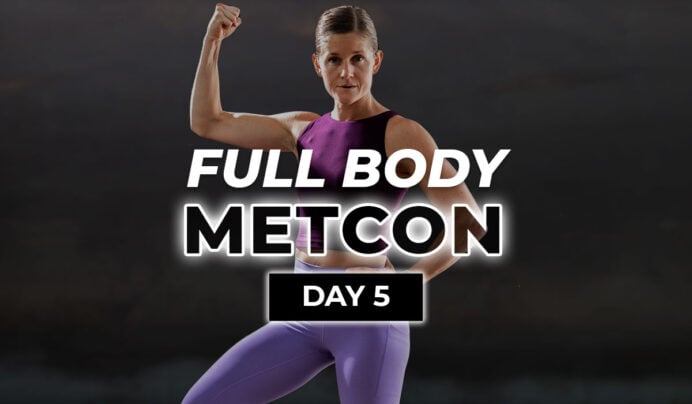
At-Home Fitness Test (Free PDF Download)
Measure your fitness level with this basic at-home fitness test. I’ve designed this fitness assessment to objectively assess your strength, endurance flexibility and mobility. Complete this test, then use the results to set fitness goals and track your progress.
Fitness tests are more than just the numbers; they are an overview of your current ability, a roadmap to your progress goals, and motivation to push your limits.
A basic fitness assessment is a way of objectively measuring your strength, endurance, core stability and mobility. A good beginner fitness test is accessible (requiring minimal equipment or no equipment), repeatable and measurable (with specific scoring to track progress). The goal is to perform each exercise the same way each time, record your results and re-test in 4-8 weeks to measure progress.
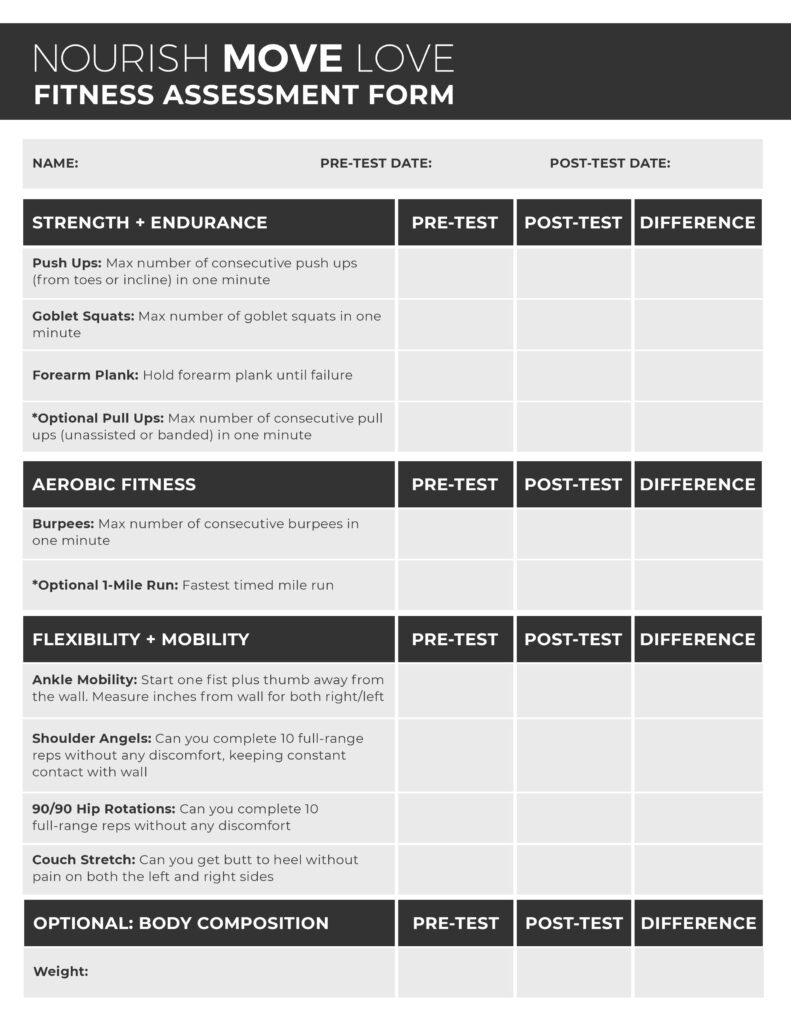
FREE PDF Download
Download Your Fitness Test PDF
I believe true fitness is much more than body weight. That’s why I’ve developed this simple test to assess your wellness at home, assessing your:
- Cardiovascular fitness
- Muscular strength (upper body strength and lower body strength)
- Core strength and stability
You can’t improve what you don’t track, which is why I’ve developed a free physical fitness test PDF to help you track gains in your functional strength, endurance and mobility.
This fitness assessment can be done from the comfort of your home or at a gym using minimal equipment. The exercises combined in this workout routine test will give you a good idea of your overall physical fitness. Modifications are provided to scale this test from beginner to advanced.
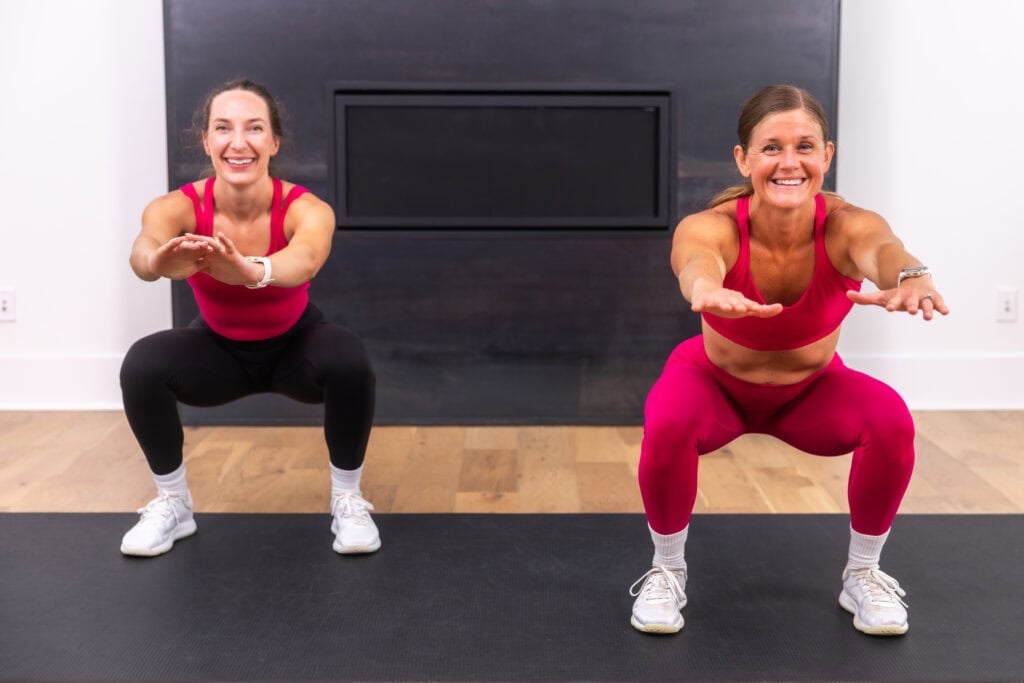
How To Test Your Fitness Levels At Home:
- Perform a thorough warm-up (a guided one is provided in the follow-along fitness test video)
- Complete the mobility test, strength test and endurance test, performing each exercise x1 at maximum effort.
- Write down your test results to establish a baseline of your current fitness level
- Follow a fitness program for 4-8 weeks
- Re-test, performing the same exercises and measuring progress.
Need help choosing a workout program? I recommend starting with my Beginner Workout Challenge or Strong20 Program if you’re a beginner, and my Build30 Program or Metcon Program if you’re advanced!
If you are 12 weeks postpartum (or more) and wondering when you can start working out again, I would complete my postpartum fitness test. This will help you determine whether your body is ready to slowly resume high-impact exercises, like HIIT training or running postpartum.
Equipment Needed:
- Fitness Test PDF (to write down scores)
- Chair or Couch (for couch-stretch)
- Stopwatch or Phone (to track time)
- Optional Heavy Dumbbell (for goblet squat)
Fitness Test Instructions:
Follow along with the guided Fitness Test on YouTube, led by certified personal trainer and certified fitness instructor, Lindsey Bomgren.
Your Fitness Assessment Looks Like This:
- 3 Circuits (flexibility and mobility, strength and endurance, and aerobic fitness)
- Combination of Timed Intervals and Reps
- Perform Each Exercise Once At Max Effort
Workout Outline
CIRCUIT ONE: Flexibility and Mobility
- Ankle Mobility (measure inches knee is from wall for both right/left)
- Shoulder Angels (can you complete 10 reps pain free)
- 90/90 Hip Rotations (can you complete 10 reps pain free)
- Couch Stretch (ability to get butt to heel for both right/left)
CIRCUIT TWO: Strength and Endurance
- Push-Ups (max consecutive reps in 1 minute)
- Goblet Squats (max reps in 1 minute)
- Forearm Plank (hold until failure)
- Optional: Pull Ups (max consecutive reps)
CIRCUIT THREE: Aerobic Fitness
- Burpees (max reps in 1 minute)
- Optional: 1-Mile Run (fastest timed mile run)
Fitness Test Exercises
1. Knees Over Toes Ankle Mobility
Measure how far your knee is away from touching the wall or your marker. The goal is to increase your ankle dorsiflexion (knees over toes) over time.
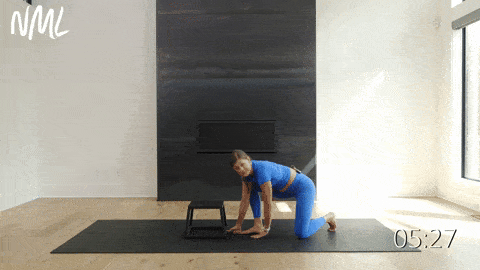
How To Do Knees Over Toes
- Test your overall ankle mobility by kneeling on the ground in front of a chair, bench or wall. Shift your weight into your left knee, placing the right foot flat on the floor. Make a fist with your thumb pointing straight out. Place your fist on the ground, thumb touching the wall and right toes behind the fist (this marks how far your toes should be from the wall or bench).
- Drive the right heel into the ground, keeping it connected to the mat as you drive the right knee over your second and third toes. Avoid collapsing the knee in.
- Continue to drive the right knee over the toes, aiming to touch the wall or bench with your right knee.
- Slowly pull the knee back a bit, then drive the knee over the toes again, slowly working to get the knee closer to the wall throughout the timed interval.
2. Shoulder Angels
Complete 10 repetitions of this mobility exercise with the goal of being pain free throughout the entire movement.
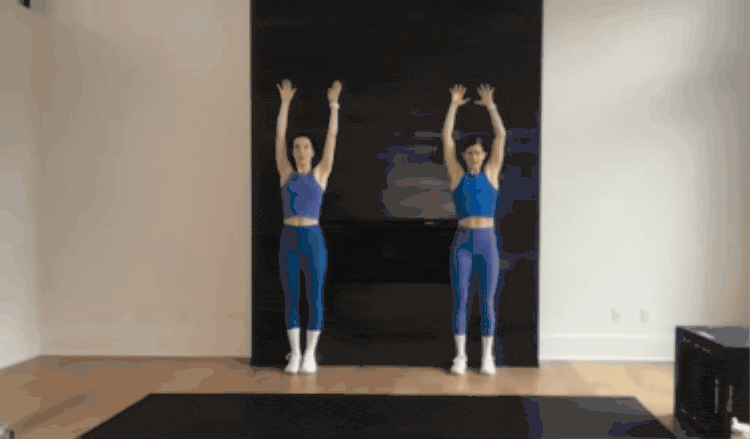
How To Do Shoulder Angels
- Start standing with your back against the wall, feet flat on the ground and arms extended straight overhead. Fingers resting on the wall, palms facing up.
- Aiming to keep your arms touching the wall, slowly slide your arms down until your elbows are in line with your shoulders, “goal-posting” your arms. Both elbows are bent at 90 degrees.
- Reverse the movement, aiming to keep your arms touching the wall, and slowly extend your arms overhead.
3. 90/90 Hip Stretch
Complete 10 repetitions of this mobility exercise with the goal of being pain free throughout the entire movement.
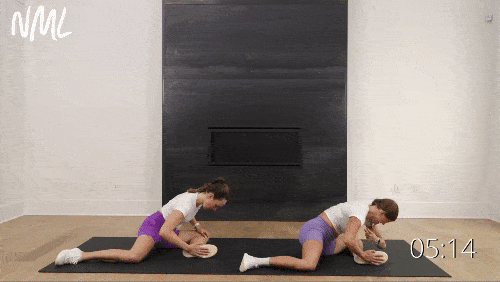
How To Do 90/90 Hip Stretches
- Start in a seated position, right leg in front of you, left leg behind you and both legs bent at 90 degrees. Create some distance between your front right heel and your back left knee.
- The right shin is parallel to the left shin (flat on the floor). Slowly lean forward, directly over your right shin (avoid leaning toward your right knee; lean directly into the middle of your shin).
- Think about driving your right knee and left knee into the mat at the same time as you hold this stretch. Hold this position for a few seconds.
- With each exhale, bring your chest closer to the floor.
- Then, shift to the other side so that your left leg is parallel in front of you, right leg behind you. Slowly lean forward, directly over your left shin, stretching the left outer glute and opening the right inner hip.
4. Couch Stretch
Measure how far your heel is away from your glute without pain. The goal is to increase your hip (specifically hip flexors) and quad mobility over time; getting your butt to meet your heel.
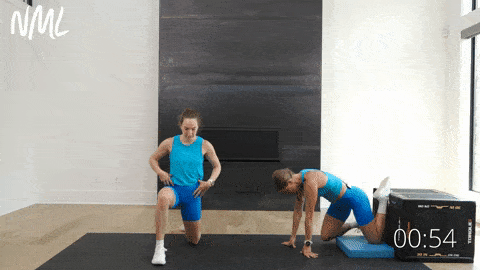
How To Do A Couch Stretch
- Start kneeling in front of a couch or bench.
- Place your left knee on the ground and your left foot against the base of the couch, shoelaces down. My right foot remains planted on the ground in front of the couch, right knee bent at 90 degrees.
- Inhale, raising your arms overhead. Aim to keep your hips square, creating a long neutral spine from head to tailbone.
- Exhale, opening up towards the right, gently rotating through your upper body as your hips remain in place. Hold for a few breaths.
- Then inhale, raising arms overhead and returning to starting position.
Modification: Find a lunge position and omit placing your back foot on a couch or bench. Note that the more upright your torso is, the more intense this exercise is.
5. Push-Up
Complete max number of consecutive repetitions in 1 minute.
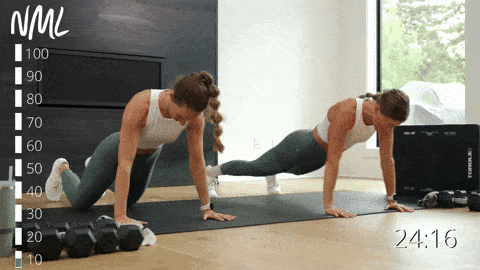
How To Do A Push-Up
- Start in a standard high plank position with your shoulders stacked over your wrists, weight evenly distributed amongst all 10 fingers. Pull your kneecaps up towards your belly, feet hip-width apart. Option to place your hands on weights if you have wrist pain.
- Hold this plank position, maintaining a straight line with your body, gaze slightly in front of you.
- Slowly lower your chest down towards the ground as your elbows fall back towards your hips (not out to the sides, keep elbows tight to the body).
- Once at the bottom of your push up, exhale as you push back up into a high plank position (top of your push up position).
Modification: Perform modified push-ups from your knees or at an incline. If push-ups hurt your wrists, try placing your hands on a set of dumbbells. If you’re looking to improve your push-ups, check out my free 12-Week Push-Up Progression Program.
6. Goblet Squat
Complete max number of consecutive repetitions in 1 minute. Option to hold one dumbbell at your chest.
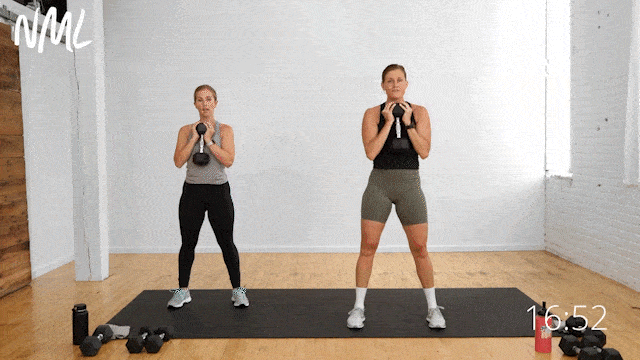
How To Do The Dumbbell Squat (Goblet Squat)
- Start standing feet shoulder-width distance apart knees slightly bent, holding a single dumbbell at your chest (vertically so dumbbell is touching your collarbone and sternum). Option to place a resistance band six inches above your knees.
- Lower down into a squat position, lowering your hips down parallel with your knees. Drive your knees out toward your outer three toes.
- Drive through your heels to stand tall, returning to a standing position.
7. Forearm Plank
Hold until failure; going for max time.
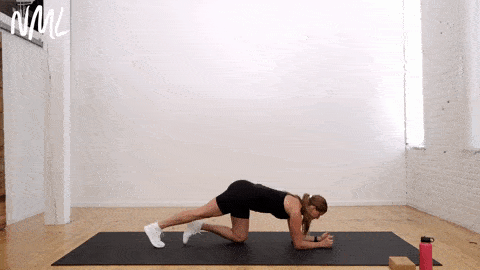
How To Do A Forearm Plank
- Start kneeling on the ground — forearms on the mat, shoulders stacked over elbows.
- Step both feet back, forming a long line from head to tailbone.
- Squeeze your abs and pull up on your knee caps to engage your core. Avoid “piking” hips up or letting hips drop. Focus on keeping a neutral spine.
Modification: Substitute incline plank by placing your hands on a chair or bench; or drop to your knees for modified plank.
8. Pull-Up or Chin Up
Targets: Latissimus dorsi (lats), erector spinae, trapezius (traps), biceps, pectoralis major and minor (chest) and core.
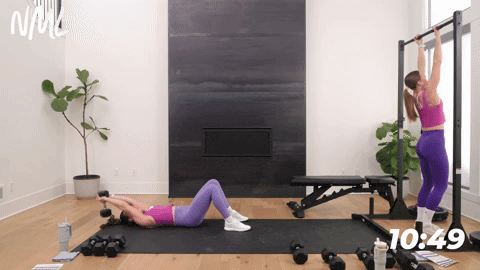
How to Do Pull-Ups or Chin Ups
- Start standing underneath your pull-up bar, feet hip-width apart, neck and shoulders relaxed.
- Reach up and grip the pull-up bar. An overhand grip, with palms facing away from your body is a true pull-up grip and will focus more on the back muscles. Whereas, an underhand grip, with palms facing you is a true chin-up grip, and will target both the back and bicep muscles. With both grips hands should be slightly wider than shoulder-width distance apart.
- Allow your body to hang freely with your arms fully extended.
- Initiate the pull-up by squeezing your shoulder blades together and pulling your chest towards the bar. Keep your elbows pointed downward throughout the movement.
- Continue to pull your body, pulling your chest up until your chin is above the bar, or as high as you can comfortably go. Keep your core engaged and your body straight throughout the movement.
- Slowly lower yourself back down to the starting position, extending your arms fully.
Modification: Option to perform assisted pull-ups with a long loop resistance band. Or perform dumbbell pullovers. If you’re looking to improve your pull-ups, check out my free 12-Week Pull-Up Progression Program.
9. Burpee
Complete max number of consecutive repetitions in 1 minute to raise your heart rate and test your cardiovascular endurance.
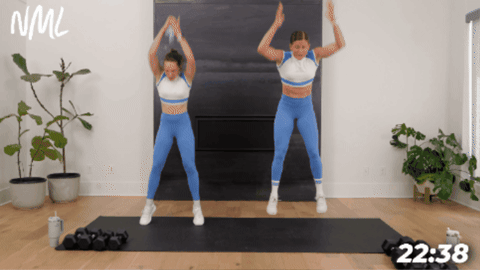
How To Do Burpees
- Start standing, feet shoulder-width apart, arms at your sides.
- Bend your knees and drop your hips as you lower into a squat position, then place your hands on the floor directly in front of your feet.
- Shift your weight into your hands as you jump your feet back to softly land on the balls of your feet in a high plank position. Your body should form a straight line from your head to your heels.
- Elbows fall back towards your body as you lower your chest towards the ground, bringing your chest to meet the floor. Press back up and return to high plank.
- Jump your feet up, landing outside your hands in a loaded squat position. Then drive through your legs to explode up, reaching arms overhead as you stand tall, returning to starting position.
Modification: Substitute towel slams for burpees. Or perform walking burpees, stepping your feet in and out of plank position rather than jumping.
10. 1-Mile Run
Targets: Cardiovascular endurance, quadriceps, hamstrings, glutes and calves.
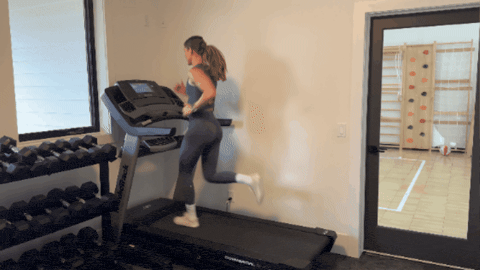
How to Train for a 1-Mile Run
- Start with run-walk intervals either on the treadmill, outdoors or on an indoor track. For example, you may start by running/jogging for 30 seconds, then walking for 30 seconds. Repeat this pattern until you run your target distance. As you build cardio endurance, gradually increase your running time while decreasing walking time. Continue increasing your running time until you are able to run for the entirety of the mile.
- Focus on cross-training. In addition to adding short and medium-distance runs to your training routine, I recommend following a strength training for runners workout plan that incorporates core, upper body and lower body exercises.
Modifications: Substitute a 1-mile power walk if running doesn’t feel good for your joints.
FAQs
One of the most simple fitness tests used to evaluate risk of premature death is the balance test. Researchers asked middle-aged people to stand on one leg for 10 seconds, and found those unable to do so had nearly double the risk of premature death (Harvard).
To calculate your resting heart rate, sit or lie down, then place your index and middle fingers on the inside of your wrist below your thumb. Count the number of heartbeats in 60 seconds. Alternatively, use an activity tracker to calculate your resting heart rate.
Some fitness metrics will naturally shift as we age, but with smart programming and intentional training, we can dramatically decrease the rate of change and slow the decline. The phrase “use it or lose it” applies to fitness, and things like speed, power, agility and muscle mass naturally decline with age — unless you continue training them!
Getting Stronger, One Step At A Time
Strength, endurance and mobility are all key parts of functional fitness – also known as your ability to function in your real, everyday life. My favorite thing about this fitness assessment is that it’s truly “you vs you” – no matter what your results are, having a baseline fitness established allows you to set tangible, measurable progress goals to work towards. Results don’t happen overnight (which is why I recommend waiting 4-8 weeks to re-take the fitness assessment!), but you will see and feel changes by being consistent. You got this!
You Might Also Like
Fitness EducationPin This At-Home Fitness Test (With Free PDF Download)
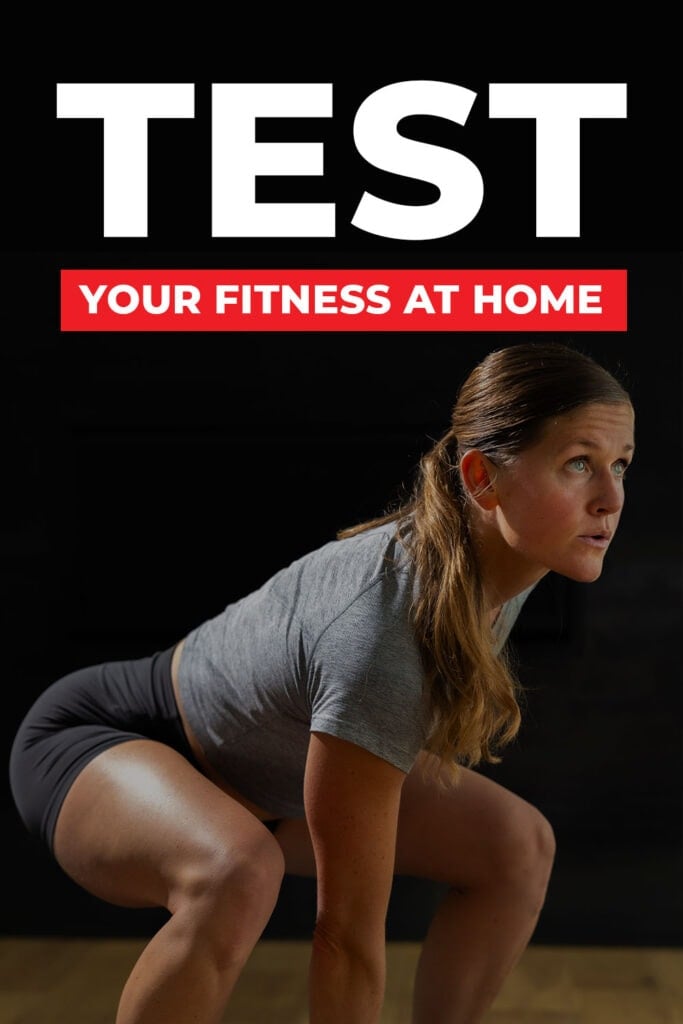
This post includes affiliate links. I do earn a commission for products purchased using these links (at no additional cost to you). Thank you for supporting Nourish Move Love, making the content you see on this blog possible.










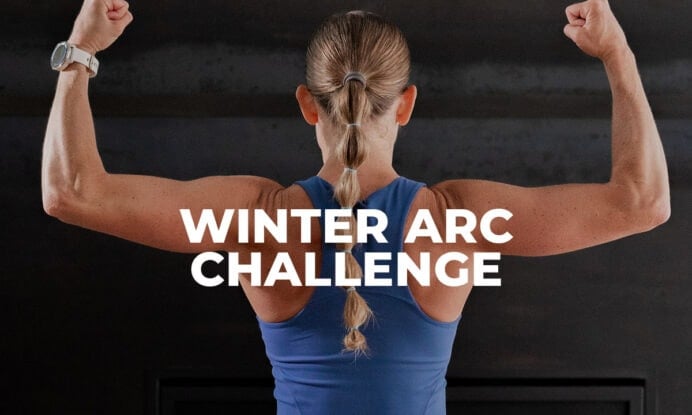
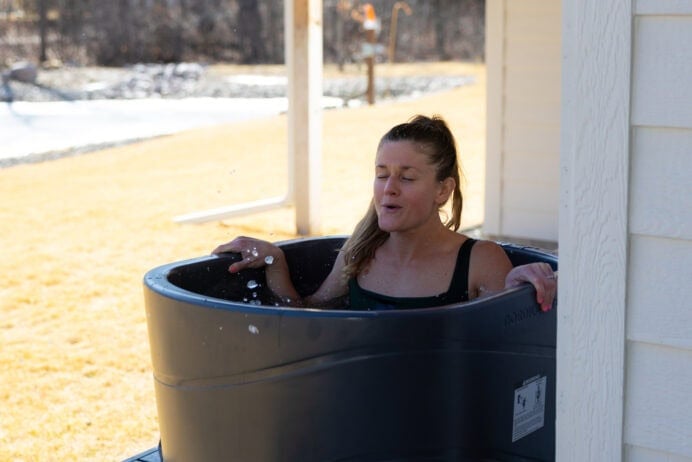
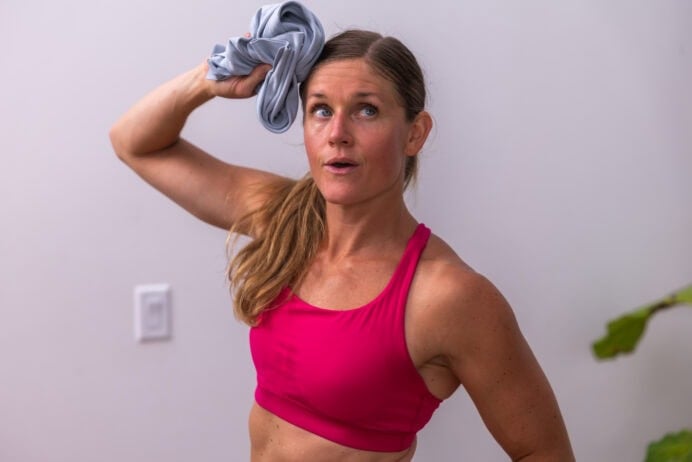
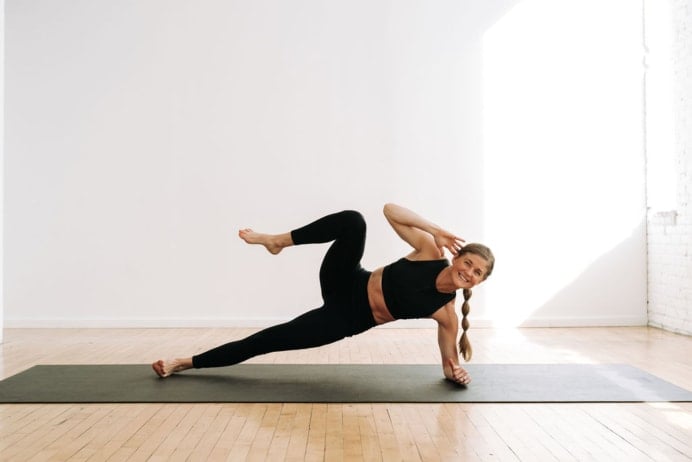
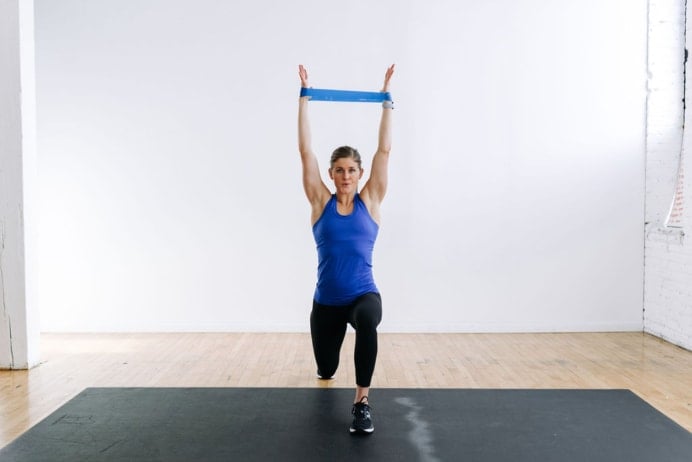
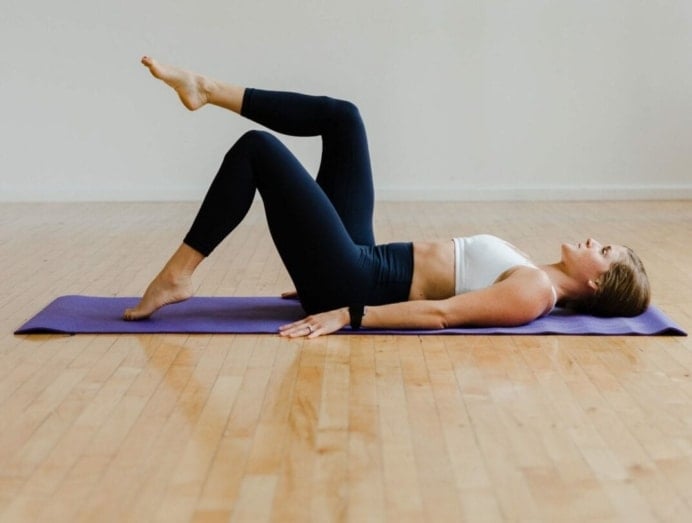
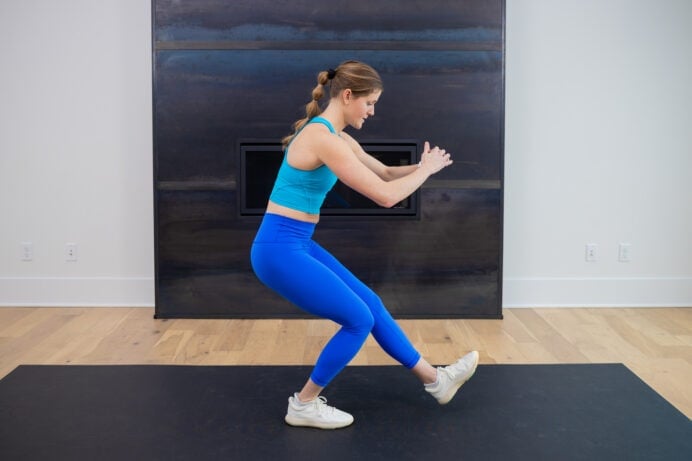
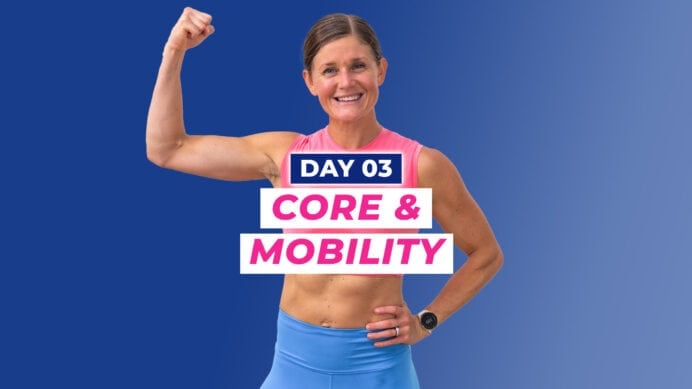
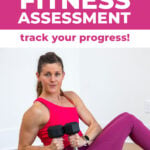
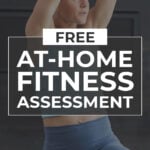
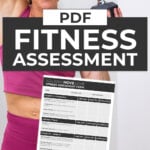
My mother in law is interested in this, but concerned it’s not good for her age. Do you have ideas for a more 60s+ fitness assessment?
Hi Kiley! This fitness test can certainly be adapted. Here are some modifications and subs you could try:
– Sub a dumbbell chest press for push ups, or take the push ups from an incline
– Sub bodyweight squats for goblet squats
– Sub goblet marches for a plank (how many can be completed in one minute), or take the plank from an incline
– Sub towel slams for burpees
– Sub a one mile walk for the run
Thanks!
-Lindsey
Hello,
I just had to reach out to you. I am just starting my fitness business so I have been doing some market research, and I have to say that your website is one of the most user-friendly, aesthetically appealing, and robust websites I have come across in a long while. It is nicely organized, provides all the tools needed to get started on a workout plan, and it appears that most of it is free (which is practically unheard of outside just using YouTube videos). I just wanted to say thank you for spreading the knowledge, and I hope to one day be able to influence the improvement of people’s well-being, as I am sure you already are.
Thank you,
Jessica
Jessica! I think this is the kindest message I’ve ever received! Thank you so much for your kind, encouraging words! We’ve worked very hard on our site and online business for over 9 years and I feel so fortunate to be able to make fitness content free and accessible to all while still making this a sustainable business. I wish you all the best as you continue to build your business! -Lindsey